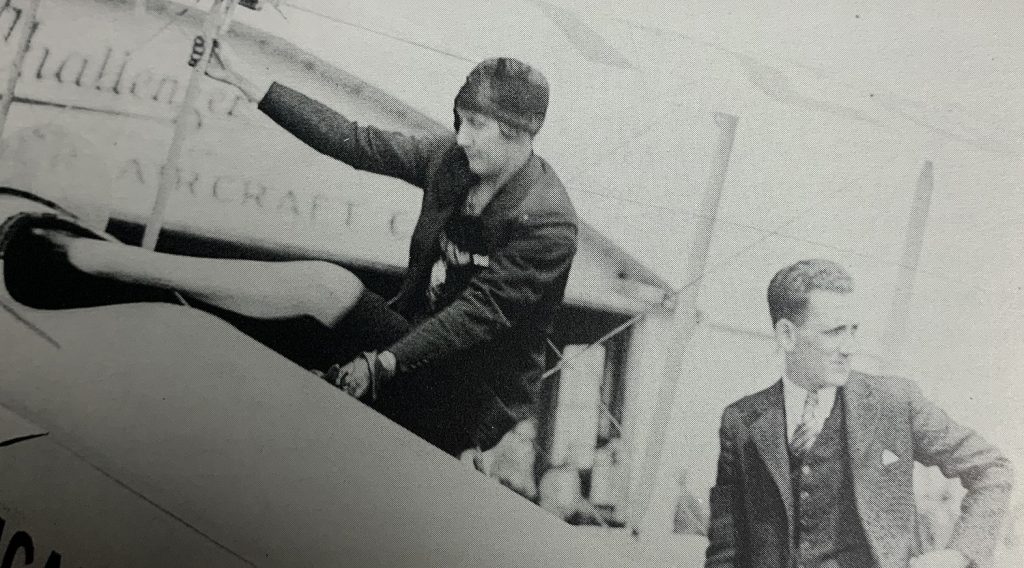Lady Heath’s Background
Lady Mary Heath, a record setting Irish aviatrix, also campaigned for women’s rights. Born Sophie Catherine Theresa Mary Peirce-Evans in November 1896, she excelled in athletics. She ranked 2nd in the high jump by 1922. By late 1923, she shared the women’s world record for high jump with American Elizabeth Stine. Subsequently, Lady Heath represented Britain in the Women’s Modern Olympic Games in Paris that same year. She culminated her athletic career in 1924 by becoming a founding member of the British Women’s Amateur Athletic Association.
An Aviatrix
Lady Heath’s future changed dramatically when she became one of the first members of the London Aeroplane Club. Flying lessons followed despite her meager funds. On November 4, 1925, she received her pilot license. In addition to this, Lady Heath became Britain’s first officially recognized female commercial pilot. Clearly, this involved much campaigning.
The International Commission for Air Navigation passed a resolution banning women from operating commercial aircraft, treating menstruation as a disability. Joining forces with journalist Stella Wolfe Murray, they challenged the resolution and won. This paved the way for other women to follow and perform public flight demonstrations and stunts. Elected to the Royal Aeronautical Society proved to be a great honor. As a woman, however, she could not attend meetings.
A Title
Following the death of her first husband, Lady Heath married 75-year-old Sir James Heath, a wealthy ship owner and member of Parliament. As a result, Sophie acquired the title Lady Mary Heath.
The couple traveled to Cape Town by steam liner with her brand-new Avro Avian safely stowed aboard. Her plan included launching a south–north flyover of Africa at the beginning of January 1928. She landed at London’s Croydon Airport five months later. For this feat, Lady Heath became a Fellow of the Royal Geographical Society. This suit her well as it was an honor reserved for the most intrepid explorers.
Lady Heath, flying a Great Lakes over Cleveland, crashed through a factory roof in August 1929. She never fully recovered from her serious injuries. Ten years later, she died after falling from a London tram.
Her Legacy
The tenacity of her early victories for women in athletics and aviation secure her pioneering legacy.
The following is an anecdote about Lady Heath. “Hoisting a well-turned leg into the cockpit of an airplane appeared typical of her character and her will. If she wasn’t proud of her shapely legs, she would have worn britches”

